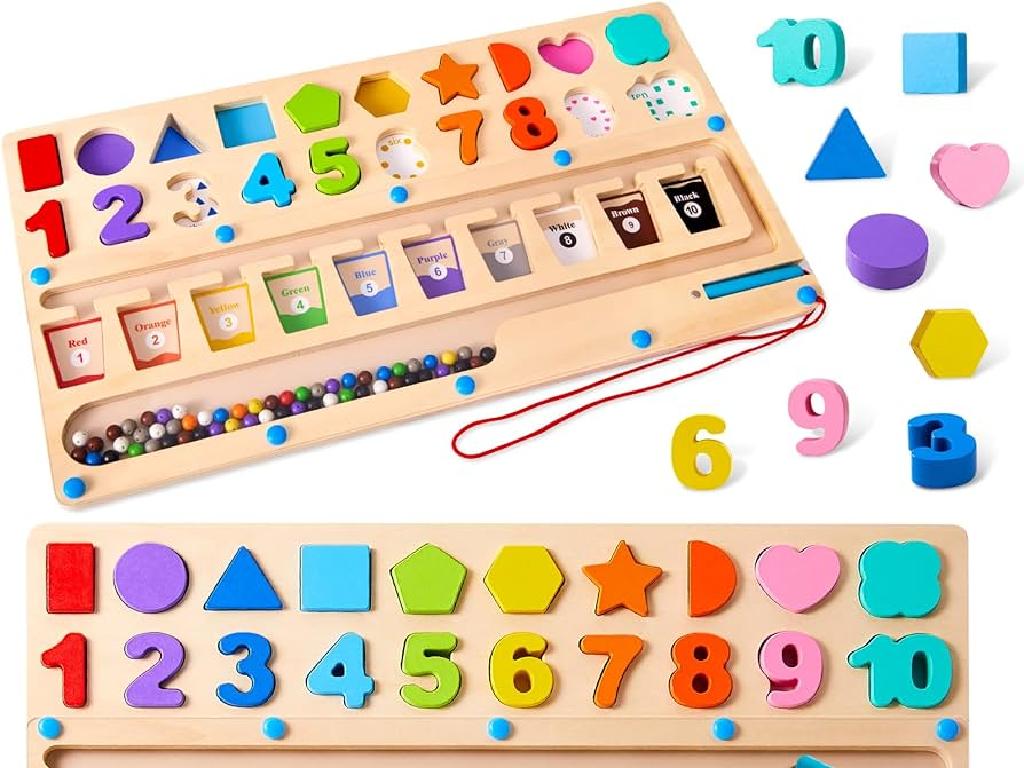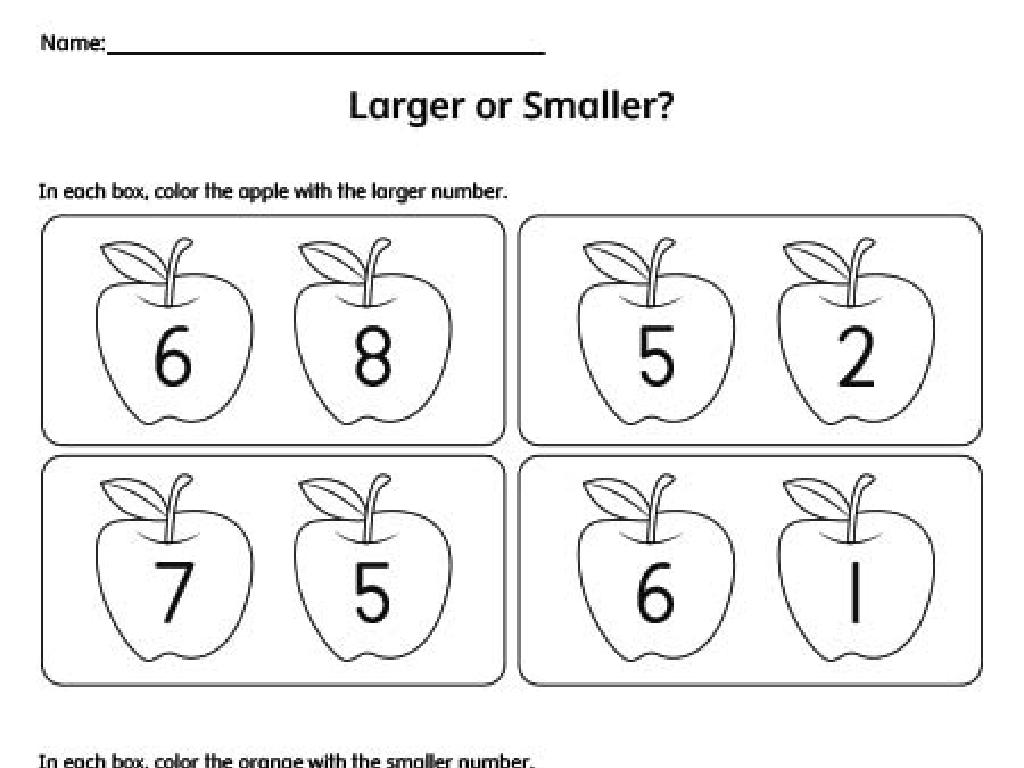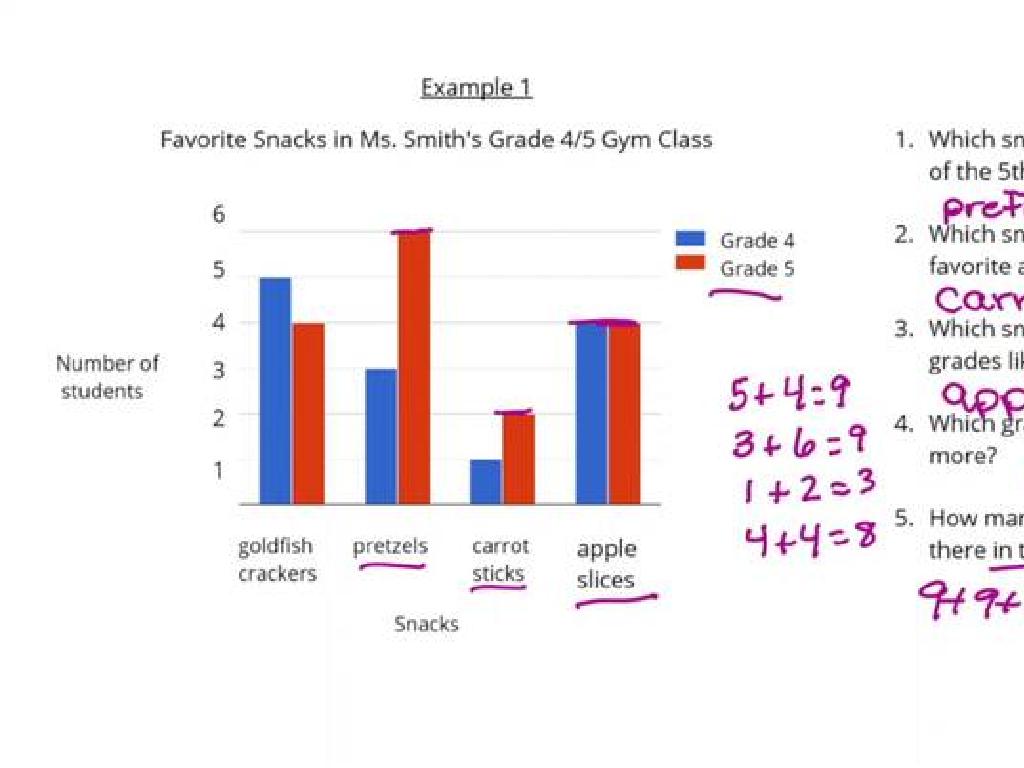Identify Pentagons
Subject: Math
Grade: Second grade
Topic: Two-Dimensional Shapes
Please LOG IN to download the presentation. Access is available to registered users only.
View More Content
Exploring Pentagons
– What is a pentagon?
– A shape with five straight sides
– Counting pentagon sides
– Let’s count: 1, 2, 3, 4, 5 sides!
– Pentagons in daily life
– Look for pentagons around, like a home plate in baseball
– Activity: Find a pentagon
– Can you find an object shaped like a pentagon at home or school?
|
Introduce the concept of pentagons by defining them as five-sided shapes. Engage the students by asking them to count the sides of a pentagon together. Highlight the presence of pentagons in everyday life, such as in sports or architecture, to make the concept relatable. Encourage the students to observe their surroundings and find pentagon-shaped objects, fostering an interactive learning environment. This activity will help students recognize pentagons and understand their properties in a fun and practical way.
Exploring Pentagons
– A pentagon has five sides
– Each side is straight and connects at corners
– It also has five angles
– Angles are where the sides meet
– ‘Pentagon’ means five angles
– From Greek ‘penta’ for five and ‘gonia’ for angle
– Let’s count sides and angles
– Practice by drawing or using objects
|
This slide introduces the concept of a pentagon to second-grade students. Begin by explaining that a pentagon is a two-dimensional shape with five straight sides and five angles. Highlight the origin of the word ‘pentagon’ from Greek to emphasize the meaning of its name. Engage the students by counting the sides and angles of a pentagon together. You can use visual aids like pictures of pentagons or have the students draw their own pentagons. Encourage them to look for real-life examples of pentagons in the classroom or at home. This activity will help solidify their understanding of the shape and its properties.
Types of Pentagons
– Two main pentagon types
– Regular pentagons: equal sides
– All sides and angles are equal
– Irregular pentagons: varied sides
– Sides and angles can be different
– Comparing pentagon types
– How are they similar and different?
|
This slide introduces the concept of pentagons to second-grade students, focusing on the distinction between regular and irregular pentagons. A regular pentagon has five sides of equal length and five equal angles, which is a great way to introduce symmetry. In contrast, an irregular pentagon’s sides and angles are not uniform. Use simple, clear language to explain these concepts and consider bringing in real-life examples or cut-outs of both types of pentagons for students to explore. Encourage the students to draw their own regular and irregular pentagons and to discuss how they can identify each type. This will help them understand the properties of shapes and how they can be categorized.
Finding Pentagons Around Us
– Pentagons in everyday life
– Examples: baseball home plate
– Like the shape of the home base in baseball
– Pentagon signs and buildings
– Road signs, the Pentagon in D.C.
– Identify pentagons in pictures
– We’ll look at photos and find pentagons together
|
This slide aims to help students recognize pentagons in the world around them. Start by explaining that a pentagon is a 5-sided shape. Show them everyday objects that are pentagons, such as a home plate in baseball, which they might see in games or on TV. Discuss the pentagon-shaped road signs that give instructions to drivers, and mention the Pentagon building as a famous example. Use pictures to make these examples visual and engaging. Encourage students to look for pentagons in the classroom or at home and bring their examples to the next class. This activity will help solidify their understanding of pentagons by connecting the concept to real-world objects.
Drawing a Pentagon
– Start with a top point dot
– Draw each side step by step
– Make all sides equal length
– Use a ruler to keep sides equal
– A pentagon has 5 equal sides
– Count the sides to ensure there are five
|
This slide is designed to teach second-grade students how to draw a pentagon, which is a fundamental two-dimensional shape in geometry. Begin by instructing students to place a single dot on their paper to represent the top point of the pentagon. Then, guide them to draw the sides one at a time, connecting each new point back to the last. Emphasize the importance of trying to keep all sides the same length, which is a characteristic of a regular pentagon. Encourage the use of a ruler to achieve equal side lengths. Remind them that a pentagon should have five sides, and have them count the sides after drawing to check their work. This activity will help reinforce their understanding of shapes and develop their drawing skills.
Pentagon Properties
– Pentagons have five sides
– Five angles total 540 degrees
– Add all angles to get 540°
– Pentagons have five corners
– Measure angles with a protractor
– Use a protractor for accuracy
|
This slide introduces students to the basic properties of pentagons. Emphasize that a pentagon is a special shape with five straight sides and five angles. Show them how to count the sides and vertices on a pentagon. Explain that when we add up all the angles inside any pentagon, the total will always be 540 degrees. This is a fixed property that defines pentagons. Demonstrate how to use a protractor to measure each angle inside a pentagon, ensuring students understand the process of measuring angles. Provide pentagon shapes for students to practice measuring angles themselves. Encourage them to verify that the sum of the measured angles equals 540 degrees.
Class Activity: Pentagon Hunt
– Let’s search for pentagons
– Draw pentagon-shaped items
– Use your drawing sheet to sketch items
– Share your pentagon finds
– Show your classmates what you found
– Explain why they’re pentagons
– Tell us what makes them pentagons
|
This activity is designed to help students recognize pentagons in the world around them. Encourage the children to look for objects that have five straight sides and five angles. Provide drawing materials and ask them to sketch the items they find. Once everyone has completed the hunt, gather the class and have each student present their drawings, explaining why they believe each item is a pentagon. This will reinforce their understanding of the shape and its properties. Possible items they might find include certain types of tables, signs, or even drawn or printed images. The goal is to make learning interactive and fun, while also solidifying the concept of pentagons in their minds.
Pentagon Review and Fun Facts
– Recap: What is a pentagon?
– A shape with 5 sides and 5 angles
– Special qualities of pentagons
– Each interior angle is 108 degrees
– Finding pentagons in daily life
– Look for pentagons at home or school
– Playing the shape-finding game
|
This slide is meant to consolidate the students’ understanding of pentagons. Start by asking the class to recall the definition of a pentagon. Highlight the special qualities of pentagons, such as having five sides and angles, and that each interior angle adds up to 108 degrees. Encourage students to observe their surroundings and identify pentagon-shaped objects, which helps them relate the concept to the real world. Conclude by suggesting a game where they find shapes around them, making learning interactive and enjoyable. This activity reinforces their knowledge and keeps them engaged.






